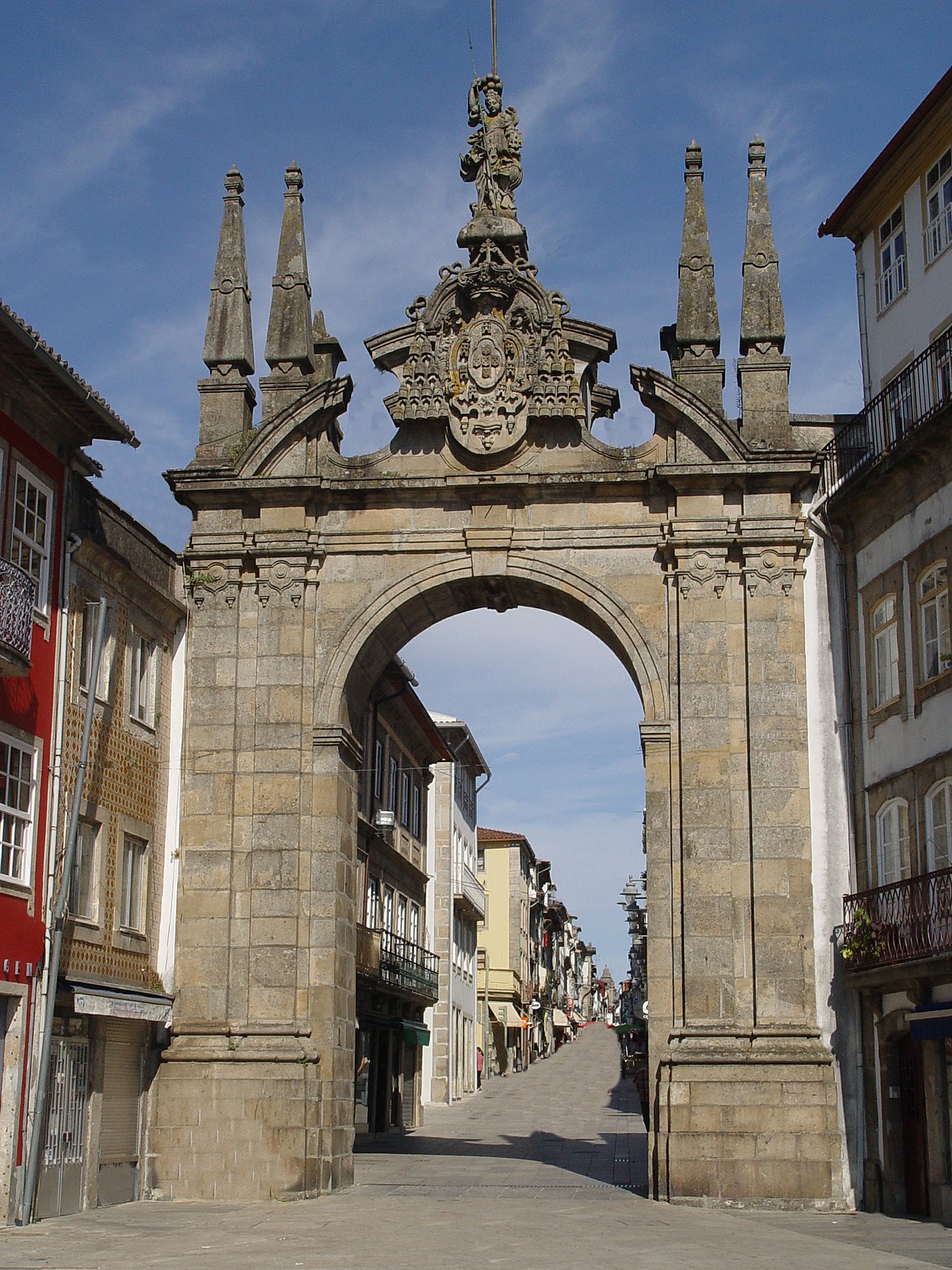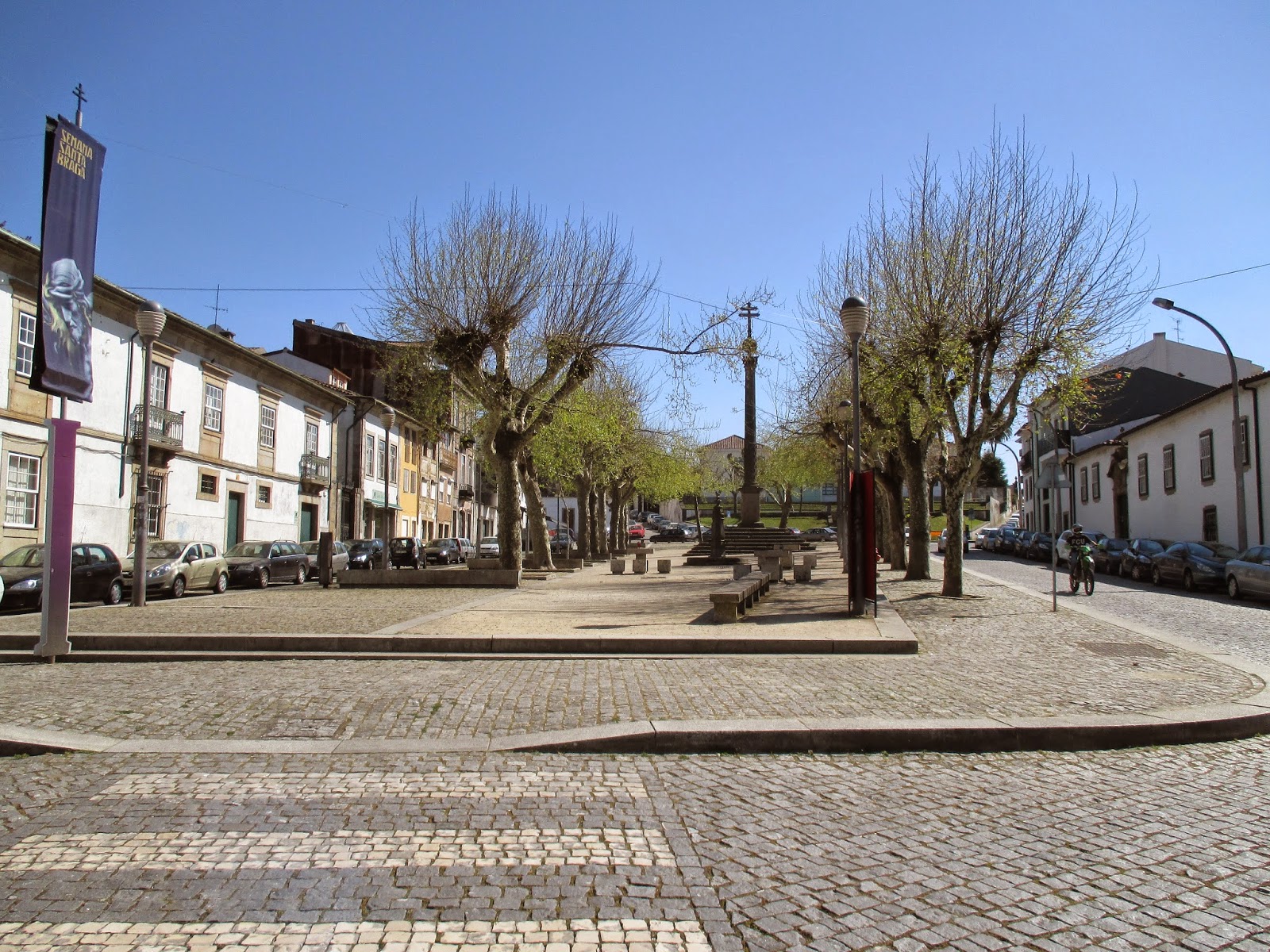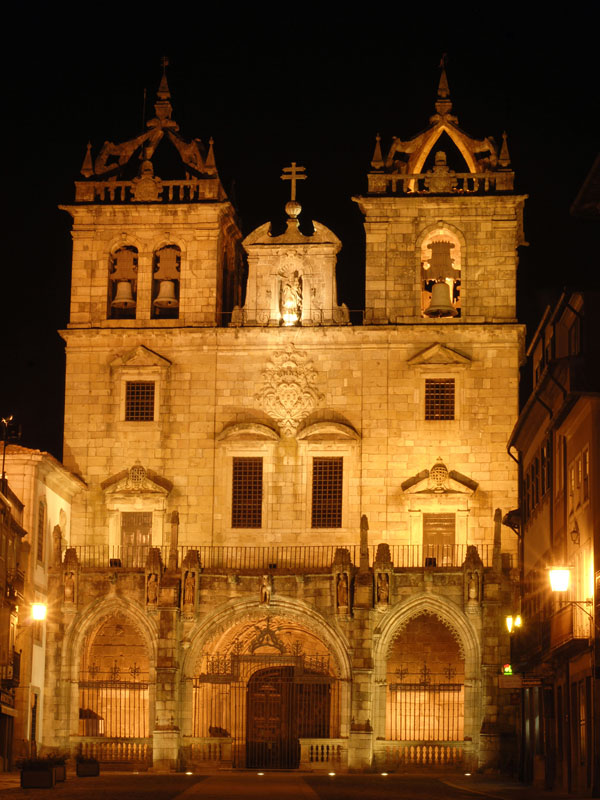Foi a capital da província romana da Galécia, no século III. Foi conquistada pelos Suevos, que a fizeram capital do seu reino (século V) e, mais tarde, pelos Visigodos. ntre o século VIII e o século X, foi invadida pelos árabes, tendo sido totalmente destruída. No século XI, ressurge à sombra da catedral e do poder dos arcebispos, senhores de Braga.
Em 1494 saiu do prelo bracarense de João Gherlinc o primeiro breviário bracarense impresso.
No século XVI, um humanista, D. Diogo de Sousa, um autêntico príncipe do Renascimento, arcebispo de Braga (1505 a 1532), empreende a transformação profunda da velha cidade medieval (com 24 ruas e 800 moradias), tanto no urbanismo como na cultura. Enriquece a Sé com uma majestosa ábside. Abre ruas e praças dentro e fora das muralhas (Campo da Vinha, Carvalheiras, Hortas, Remédios). Funda o Hospital de S. Marcos. Enche Braga de fontes e de esculturas. Rasga a grande alameda chamada Campo de Sant'Ana, hoje Avenida Central. Mas é também nesta época que se acentuam as características eminentemente religiosas de Braga, através da fundação de inumeráveis mosteiros, conventos (S. Frutuoso, Remédios, S. Paulo, Pópulo, Salvador, ...), colégios, seminários, confrarias, etc. É esta evolução que condiciona fortemente a mentalidade e a forma de vida dos habitantes de Braga.
Braga, no início do século XVIII, aparece-nos como uma cidade piedosa, fechada, voltada para dentro de si mesma, protegida pelas gelosias e adufas que, surgidas nas casas religiosas, rapidamente se espalham por todo o conjunto urbano.
No século XVIII, a cidade evidencia-se pelo estilo da arquitectura - o barroco - que a marca profundamente. Nesta época, surge aquele que se pode considerar o maior génio da arte bracarense, André Soares. A ele se devem, entre outras obras, a Casa da Câmara, o Palacete do Raio e a Igreja dos Congregados.
It was the capital of the Roman province of Galicia, in the third century. It was conquered by the Swabians, who made it the capital of his kingdom (V century) and later by the Visigoths. Between the eighth century and the tenth century, it was invaded by the Arabs, having been totally destroyed. In the eleventh century, it resurfaces in the shadow of the cathedral and the power of the archbishops, Braga masters.
In 1494 left the Braga John Gherlinc press the first printed Braga breviary.
In the sixteenth century humanist, D. Diogo de Sousa, a true prince of the Renaissance, Braga archbishop (1505-1532), undertakes the profound transformation of the medieval old town (with 24 streets and 800 houses), both in urban and in culture. Enrich Cathedral with a majestic apse. Open streets and squares inside and outside the walls (Field of Vineyard, Carvalheiras, Hortas, Remedies). He founded the Hospital of St. Mark. Fills Braga sources and sculptures. It tears the big mall called Campo de Sant'Anna, today Central Avenue. But it is also at this time that accentuate the eminently religious characteristics of Braga, through the foundation of countless monasteries, convents (S. Fruitful, Remedies, St. Paul, Pópulo, Salvador, ...), colleges, seminaries, brotherhoods, etc. . It is this development that strongly affects the mentality and way of life of the inhabitants of Braga.
Braga, in the early eighteenth century, appears to us as a city pious, closed, inward itself, protected by shutters and louvers that emerged in religious houses, quickly spread throughout the urban area.
In the eighteenth century, the city is evident in the style of architecture - baroque - that deeply marks. At this time, it appears that it can be considered the greatest genius of Braga art, André Soares. The it must, among other works, the Town Hall, the Ray Palace and the Church of Congregados.
Esta cache vai desafiar e ao mesmo tempo colocar pela frente um pequeno passeio pedonal pelo centro histórico.
As coordenadas inciais, porta de entrada da cidade " Arco Porta Nova". Bom proveito.
This cache will challenge and at the same time put forward by a small promenade through the historic center.
The inciais coordinates, city gateway. Enjoy it.
1- Arco da Porta Nova
Ornamenta a porta poente da muralha, voltada ao litoral, aberta em 1512, junto da qual se fazia por tradição, a entrega das chaves da cidade.
Em 1772/1773 construiu-se o actual Arco, ex-libris da cidade, projectado por André Soares (obra póstuma), que associa o Barroco ao Neoclássico.
Decorates the west gate of the wall, facing the coast, opened in 1512, with which it was traditionally the delivery of the city keys.
In 1772/1773 he built up the current arc, the symbols of the city, designed by André Soares (posthumous), which combines the Baroque to Neoclassical.

Junto localizar tabuleta informativa e obter a soma do ano da iniciativa do Arcebispo D.Diogo de Sousa.
Along locate information tablet and get the sum of the year's initiative D.Diogo Archbishop de Sousa.
2- Campo das Carvalheira N 41º 32 983 W 008º 25 817
Praça ampla, coberta por árvores centenárias que remonta ao século XV e à acção reformadora da cidade medieval protagonizada pelo arcebispo D. Diogo de Sousa. O belíssimo cruzeiro do século XVIII (classificado como Monumento Nacional), foi colocado ao centro, nos primórdios do século XIX, vindo do Campo das Hortas. A acção de requalificação concluída em 2002, interrompeu anos de mau uso, devolvendo este emblemático espaço urbano à plena fruição e uso dos cidadãos.
Large square, covered with old trees dating back to the fifteenth century and reformative action of the medieval town led by the Archbishop Diogo de Sousa. The beautiful cruise of the eighteenth century (a National Monument), was placed in the center, in the early nineteenth century, from the Campo das Hortas. The requalification action completed in 2002, interrupted years of misuse, returning this iconic urban space to the full enjoyment and use of citizens.

Contabilizar numeros de Árvores existentes dentro do pátio.
Account existing trees numbers inside.
3- Campo das Hortas N 41º32 983 W 008º25 817
Erigida no consulado do Arcebispo D. Frei Agostinho de Jesus (1588-1609), foi na época, implantada no Campo de Sant’ana (actual Avenida Central). Na segunda metade do século XIX (1868), foi desmontada e posteriormente colocada neste local.
Erected at the consulate of Archbishop Frei Agostinho de Jesus (1588-1609), it was at the time located in Sant'ana Field (now Central Avenue). In the second half of the nineteenth century (1868), it was dismantled and later posted on this site.

Contabilizar numeros de Árvores existentes somente dentro do Járdim.
Account existing trees numbers only within the garden.
4-Sé Catedral N 41º32.993 W 008º25 649
Ex-libris fundamental e paradigmático da História de Braga, reúne os vários estilos arquitectónicos das diversas épocas que atravessou, desde a sua sagração em 1093 até hoje. O Românico, o Gótico de diferentes fases e inspirações e o Barroco, são os principais elementos de um maravilhoso mosaico estilístico, que congrega fascinantes capelas (dos Reis, de S. Geraldo, da Glória) e um excepcional tesouro.

Contabilizar numeros de estatuetas existentes na fachada.
Account existing statuettes of numbers on the facade.
Para localizar as coordenadas da cache, devemos ter em consideração as anutações feitas ao longo do passeio.
To find the coordinates of the cache, we must take into account the anutações made along the promenade.
-
B= Número de Àrvores B = Number of trees
-
3º Campo das Hortas
-
C= Número de Àrvores C = Number of trees
-
4ºSé Catedral
-
D= Número de estatuetas existentes na fachada. D= Account existing statuettes of numbers on the facade.
Cache:
N 41º 32.(932+A+B=X)
W 008º 25.(726+C+D=Y)
